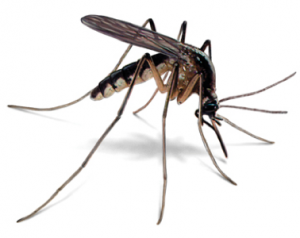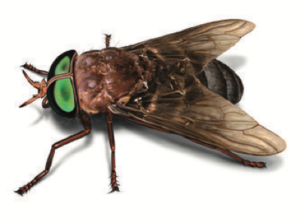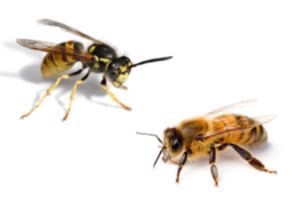Spring brings nature back to life after months of the cold and snow. Those that come back aren’t limited to bright flowers and green grass! It’s also the best time for critters to flourish and follow their instincts.
For us humans, it’s always a little annoying because these spring-time pests are going to wreak havoc this season since our winter was fairly mild.
Here’s a list of common spring pests, and how to deal with them:
Mosquitoes

Here’s a disease carrier that’s always getting the spotlight. Mosquitoes are present everywhere, except for Antarctica and a few places that have very long and cold winters. This insect can host a variety of diseases, like dengue, West Nile and Zika. Good news, the instances of these diseases compared to the number of bites per year is incredibly small, so if you do get bit by one, it’s likely not serious.
How to deal with them
Time and time again, prevention is the best medicine. Avoid having stagnant water in your house, because this is where mosquitoes can breed and grow.
If you’re outdoors, this tip still holds true. Rivers and lakes also have still water that mosquitoes can use.
If you’re camping near these spots, be sure to wear clothing that covers most of your skin – such as long sleeves and pants. Another option is to use repellents, like DEET (diethyltoluamide), citronella candles, or an outdoor repeller lantern.
If you get bit, apply hydrocortisone cream or calamine lotion on the spot to relieve itchiness. If you start experiencing flu-like symptoms such as fever within 2 days of the bite, visit your doctor.
Ticks

thebuggeek.com
Ticks are found almost everywhere in the U.S., especially in wooded areas. These creatures can be a serious concern for outdoor enthusiasts because they can carry Lyme disease – symptoms of which includes chronic rash, joint pain, and lethargy.
Ticks are small bloodsuckers that prey on exposed skin (or fur, if you have a pet companion) without you even noticing. The longer it stays attached, the higher the risk of infection, so immediate removal is crucial.
If you live in the woods or plan on going on a hike at one of Dayton/Springfield’s nature parks, make sure you’re taking the proper precautions –>
How to deal with them
For preventing the bites in the first place, the best way is to wear long-sleeves and pants whenever you’re going for a hike in the woods. Another thing you can do is use a repellent, like BiteBlocker.
You can refer to our previous article on what to do if you get bit here
Horse Flies

getridoffliesguide.come
Once Spring kicks in, flies of all kinds swarm for places to lay their eggs. Most kinds are a simple nuisance, but there are also some that can leave painful bites, such as horse flies. Horse flies in particular are significantly larger than the common housefly. Also, the females are aggressive when it comes to blood feeding.
How to deal with them
Flies, in general, sleep from night until sunrise. So if you’re an early morning outdoorsman, then you have nothing to worry about.
For prevention tips, wearing clothing that covers most of your skin is still the best way to avoid getting bit.
A blend of citronella, eucalyptus, lavender, and peppermint can also act as a repellant for a wide range of flying insects that include horse flies.
If you get bit, don’t panic. It may be painful, but rarely can it be serious! Cool the area with a cold & wet washcloth, then disinfect it with soap and water. If it remains swollen after a few days, use an over-the-counter insect bite treatment.
Bees and Wasps

Spring is the best time for bees and wasps to build their hives to last for Summer. They sting differently, and it’s important to know the difference:
Bees use all their venom at once before they lose their stinger and die.
On the other hand, wasps retain their stinger, so they can sting you with smaller amounts of venom several times.
Bee venom and wasp venom are also different, so a person can be allergic to one and not the other. The effects are similar though – pain, itching, and swelling at the sting area.
How to deal with them
Some bees are less hostile than wasps, but it’s safer to avoid all of them. If you’re going outdoors, avoid wearing cologne, perfume, bright colors, and floral patterns on your clothes. These, and sweet food & drinks, can attract those nasty stinging insects.
If a bee or wasp lands on you, stay very still. It will most likely fly away. Swatting aggravates them, which is something you don’t want. If you do get stung and begin experiencing side effects, such as dizziness and trouble in swallowing, seek emergency medical treatment immediately.
Mild stings can be treated by just washing with soap and water, and using a cold pack. If you still have swelling after several days, you need to see a doctor so he or she can recommend the best treatment. Usually, it would be a steroid cream.
We discussed the simple things you can do to avoid these spring pests, but what happens when it’s an infestation? There are too many to handle on your own, so it’s best to contact a pest professional.

Don’t hesitate to contact us when faced with an infestation problem. We have the knowledge and expertise necessary to handle your pest problems in a safe and efficient manner!

Recent Comments